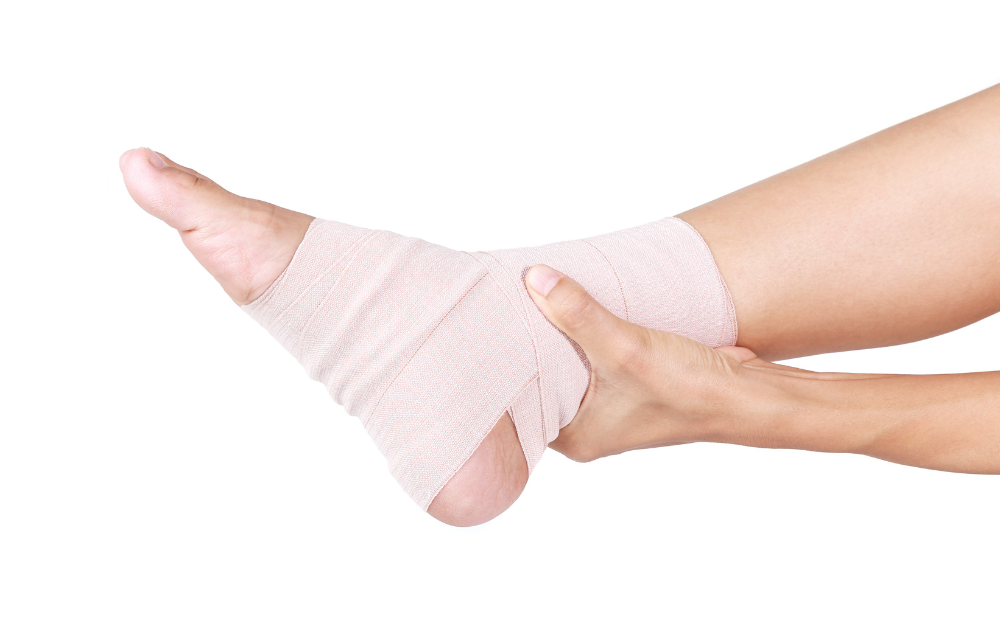Contents
Do you experience persistent ankle pain while running? If you run often, dealing with persistent ankle pain can be frustrating. The nagging discomfort might keep you from doing what you love or hinder your performance. Ankle pain tends to come with other symptoms. You may experience stiffness or weakness around your ankle as well as persistent pain.
Ankle pain doesn’t always go away on its own. Left untreated, your pain may get worse and lead to more symptoms. To help ensure the best results, it’s important to seek treatment as soon as possible. Physical therapy can be a great option for addressing your pain. Before providing treatment, a licensed physical therapist will evaluate your condition to determine the source of your pain. Once the cause of your ankle pain is identified, your physical therapist can provide specialized treatments tailored to your condition. Learning more about the potential causes of your ankle pain may help you get a better understanding of your own condition and how physical therapy can help.
Potential causes of ankle pain while running
- Overuse injury — Overuse is a common cause of ankle pain while running. If you run frequently without giving your body much time to rest between workouts, you might be putting too much strain on your ankles. Running, especially at high speeds or on uneven terrain, can put a lot of sustained pressure on your ankles and feet. Over time, this can lead to inflammation and pain. Resting can help — proper rest gives your body time to heal and prepare for the next run. Do you want to keep enhancing your performance while avoiding overuse injuries? With sports performance training, your physical therapist can help you build a balanced, sustainable routine.
- Ankle sprain — If you’re experiencing persistent pain after a sudden ankle twist or impact, you may have sustained an ankle sprain. A sprain happens when a ligament is stretched too far or torn. While ligaments throughout the body can be sprained, ankle sprains are especially common. Ankle sprains often happen during a fall or an awkward pivot. Athletes tend to be particularly vulnerable to ankle sprains. One study of jumping athletes in the United States found that ankle sprains accounted for more than half of all foot and ankle injuries. Ankle sprains can affect anyone, though. If you have sustained an ankle sprain, you may experience symptoms including aches, bruising and tenderness. Your pain may become more intense when putting weight on the injured ankle. Fortunately, ankle sprains are treatable. Your physical therapist can provide treatments designed to offer lasting pain relief. Treatments such as manual therapy can help alleviate your pain while also promoting faster healing.
- Tendinitis — Tendinitis refers to inflammation of the tendons, which are fibrous bands of tissue that keep your muscles and bones connected. Tendinitis typically develops due to repetitive stress. There are a few kinds of tendinitis that might affect your ankle. One of the most common is peroneal tendinitis. Peroneal tendinitis occurs when the tendon surrounding the outside of the ankle becomes inflamed. If you have peroneal tendinitis, you may experience symptoms such as pain, swelling and tenderness around your ankle. These symptoms may extend into your foot as well. Another kind of tendinitis that can affect the ankle is Achilles tendinitis. This condition affects the Achilles tendon, which runs from the heel into the back of the calf. Achilles tendinitis can cause pain throughout the back of the leg, including the back part of your ankle. Do you think you might have some form of tendinitis? Seeking treatment can be crucial to getting relief. With treatment modalities like ultrasound therapy, your physical therapist can help you experience rapid relief.
Can I run with ankle pain?
When you’re experiencing ankle pain while running, it can feel tempting to push through the discomfort. However, this can be counterproductive. Continuing to put stress on a painful ankle can make your symptoms worse. If your pain is the result of an injury, continuing to run may cause further damage, which can lead to more complications and a longer recovery time.
To reduce your pain and avoid long-term damage, you may need to stop running on your injured ankle. If you still want to keep exercising, it can help to find a safer alternative. Your physical therapist can help you find alternative activities that are better for your ankle. Depending on your condition, going for frequent walks may still be a viable option. Walking can help you stay on your feet without the stressful ankle impacts involved in running. Swimming can be another great alternative. When swimming, you can get the cardiovascular benefits of running without the repetitive physical strain.
If you want to get back to running as soon as possible, physical therapy can help. With gait and sports performance training, your physical therapist can help you make a gradual return to running. Continual physical therapy can be a great way to maintain your physical fitness while avoiding major setbacks such as painful injuries.
How to reduce ankle pain when running
When it comes to reducing ankle pain, physical therapists can offer a range of effective treatments. Your physical therapist can work with you to build a personalized treatment plan tailored to your needs and fitness goals. Here are some of the top treatment methods:
- Stretches — Stretching can be a great way to alleviate muscle tension. It can also help your body warm up before more strenuous exercises. If you want to go for a run without experiencing pain, stretching beforehand might help. Your physical therapist can help you practice a targeted stretching routine. To prevent ankle pain, you will likely need to engage in exercises that target your ankles and calves. Foot stretches may help as well. With the right stretches, you can loosen your muscles and promote better blood circulation throughout your body. In addition to reducing your risk of pain and injury, stretching can also enhance your running performance.
- Aquatic therapy — To be able to keep working out without the ankle pain you experience while running, aquatic therapy may be the solution. With aquatic therapy, your physical therapist can help you perform exercises in the aquatic environment of a swimming pool. The water’s buoyancy serves to keep pressure off your ankles. This means you can perform exercises that engage your leg muscles without the repetitive ankle impacts caused by running. Water also provides resistance with each moment, which is conducive to building muscle. With aquatic therapy integrated into your treatment plan, you can reduce your discomfort while continuing to improve your physical condition.
- Manual therapy — Manual therapy encompasses a range of hands-on physical therapy techniques. Your physical therapist can use manual therapy treatments tailored to your particular needs. If the muscles around your ankle are tight, for example, your physical therapist may incorporate therapeutic assisted stretching into your treatment plan. If you’ve recently sustained a soft tissue injury near your ankle, manual soft tissue manipulation may help accelerate your recovery. The versatility of manual therapy makes it a great treatment for many different conditions. If you’re looking for a treatment that can offer lasting ankle pain relief, manual therapy is an excellent choice.
Find ankle pain relief at Lattimore Physical Therapy
Lattimore Physical Therapy can help address the ankle pain you experience while running. Our team utilizes an array of specialized pain relief treatments. We can work with you each step of the way as you work toward lasting relief and recovery.
Contact our team today for more information or to schedule an initial appointment for your ankle pain.



